For small and medium-sized businesses (SMBs), data management is critical to maintaining operational efficiency, securing sensitive information, and adhering to regulatory standards. As SMBs increasingly rely on data to drive decisions, improve customer relationships, and streamline operations, ensuring the security and compliance of that data becomes vital. This blog outlines best practices for SMBs to effectively manage data while ensuring both security and compliance.
1. Establish a Data Management Strategy
A well-defined data management strategy is essential for ensuring that your business handles data responsibly. This strategy should outline how data is collected, stored, processed, and protected across the organization.
- Data Inventory: Conduct a thorough audit to determine what types of data your business collects, including customer information, financial records, employee data, and operational data.
- Data Classification: Classify your data based on sensitivity levels, such as public, internal, confidential, and restricted. This classification helps prioritize protection measures based on the risk level.
- Data Lifecycle Management: Define how data will be stored, archived, and deleted over time. Implement policies that ensure unnecessary data is deleted once it’s no longer useful, reducing the risk of breaches.
2. Prioritize Data Security
Data security is crucial for protecting sensitive information from breaches, unauthorized access, and cyber threats. Implementing robust security measures not only safeguards your data but also helps build trust with customers and stakeholders.
- Encryption: Encrypt sensitive data both at rest (when stored) and in transit (when being transferred). Encryption adds an extra layer of protection, making it harder for unauthorized parties to access the data.
- Access Controls: Implement role-based access control (RBAC) to ensure that only authorized personnel have access to sensitive data. Use principles like least privilege, where employees are only given access to the data they need to perform their job functions.
- Multi-Factor Authentication (MFA): Enable MFA for all systems and applications to strengthen login security. Requiring multiple forms of verification—such as a password and a one-time code sent to a phone—makes it harder for attackers to gain access.
- Data Backup: Regularly back up critical data to secure, offsite locations to ensure recovery in the event of data loss, ransomware attacks, or system failures. SMBs should also test their backup and recovery procedures to ensure they work effectively when needed.
3. Implement Compliance and Regulatory Standards
Staying compliant with data regulations is a legal requirement and helps protect both your business and your customers. Depending on your industry and geographic location, you may be subject to various data protection regulations.
- GDPR (General Data Protection Regulation): If your SMB handles personal data from EU citizens, you must comply with GDPR, which mandates transparency in data collection, processing, and storage. It also requires businesses to obtain explicit consent from individuals before collecting their data.
- CCPA (California Consumer Privacy Act): Similar to GDPR, CCPA applies to businesses that collect personal information from California residents. It gives consumers the right to access, delete, or opt out of data collection.
- HIPAA (Health Insurance Portability and Accountability Act): If your business operates in the healthcare sector or deals with protected health information (PHI), compliance with HIPAA is mandatory. It requires strict data protection measures to safeguard patient information.
- PCI DSS (Payment Card Industry Data Security Standard): For businesses processing credit card payments, complying with PCI DSS is essential to protect payment data and reduce the risk of fraud.
- Compliance Best Practices:
- Data Privacy Policies: Create clear data privacy policies and communicate them to both employees and customers. Ensure customers are aware of how their data will be used, stored, and protected.
- Regular Audits: Conduct regular compliance audits to ensure that your data management practices align with the relevant regulations. Update your practices as necessary to stay compliant with changing laws.
- Data Breach Response Plan: Have a well-documented incident response plan in place to handle data breaches. This plan should outline how to contain the breach, notify affected parties, and prevent future incidents.
4. Educate and Train Employees
Human error is one of the leading causes of data breaches. Training employees on data security best practices can significantly reduce the likelihood of accidental data exposure or cyberattacks.
- Security Awareness Training: Provide regular training sessions on data security topics such as phishing scams, password management, and secure file sharing. Employees should be trained to recognize potential threats and understand how to protect sensitive data.
- Data Handling Procedures: Ensure employees know how to handle sensitive data properly, including how to store, transfer, and delete information securely.
- Clear Policies: Implement clear policies for the use of personal devices (BYOD), data sharing, and access to corporate systems from remote locations. Employees should know the proper protocols for accessing company data securely, especially in remote work settings.
5. Leverage Data Management Tools
Investing in the right tools can help SMBs manage data more efficiently and securely. These tools provide automation, monitoring, and protection, allowing businesses to focus on their core operations while ensuring data is well managed.
- Data Encryption Tools: Tools like BitLocker (for Windows) or VeraCrypt offer encryption solutions for securing sensitive data on computers, external drives, and in the cloud.
- Cloud-Based Data Management: Cloud providers such as AWS, Google Cloud, and Microsoft Azure offer robust data management tools, including storage, backup, encryption, and security monitoring. These platforms often include compliance features, making it easier to adhere to regulatory standards.
- Data Loss Prevention (DLP) Software: DLP tools monitor and protect sensitive data from unauthorized sharing or leaks. They prevent employees from sending confidential information outside the organization or to unsafe locations.
- Compliance Management Tools: Tools like OneTrust and TrustArc assist with compliance management, helping businesses maintain GDPR, CCPA, and other regulatory standards. These platforms track data collection and processing, ensuring that your business meets legal requirements.
6. Monitor and Review Data Continuously
Data management is not a one-time effort. SMBs must continuously monitor, review, and update their data management practices to ensure they remain secure and compliant as new threats emerge and regulations evolve.
- Regular Security Audits: Conduct periodic security audits to identify vulnerabilities and assess the effectiveness of existing data protection measures. Address any gaps in security protocols promptly.
- Data Access Logs: Keep logs of who accessed sensitive data, when, and for what purpose. Monitoring these logs can help detect suspicious activities or unauthorized access attempts.
- Update Security Tools: Ensure that all security tools, including firewalls, antivirus software, and encryption protocols, are regularly updated to protect against the latest threats.
- Data Retention Policies: Regularly review and update your data retention policies to ensure that you are only storing data that is necessary for business operations or regulatory compliance. Delete old data that no longer serves a purpose, reducing the risk of breaches.
7. Adopt a Zero-Trust Security Model
The zero-trust security model assumes that threats can come from both inside and outside the network. By adopting zero-trust principles, SMBs can implement stricter security protocols that limit access and mitigate potential breaches.
- Principle of Least Privilege: Employees should only have access to the data they need for their job, and nothing more. This minimizes the risk of internal threats or accidental data leaks.
- Network Segmentation: Divide your network into smaller segments to prevent attackers from gaining access to all data in the event of a breach. Segmenting critical systems from general business functions can help contain security incidents.
- Continuous Verification: Verify all access requests, whether from inside or outside the organization. Regularly verify users, devices, and applications, even if they have been previously granted access.
Conclusion
For SMBs, data management is essential for maintaining security and ensuring compliance with regulatory standards. By adopting best practices such as establishing a data management strategy, prioritizing data security, implementing compliance protocols, educating employees, and using the right tools, SMBs can protect their sensitive data while meeting legal obligations. Continuous monitoring and adopting advanced security models like zero-trust can further safeguard businesses in an increasingly data-driven world.

